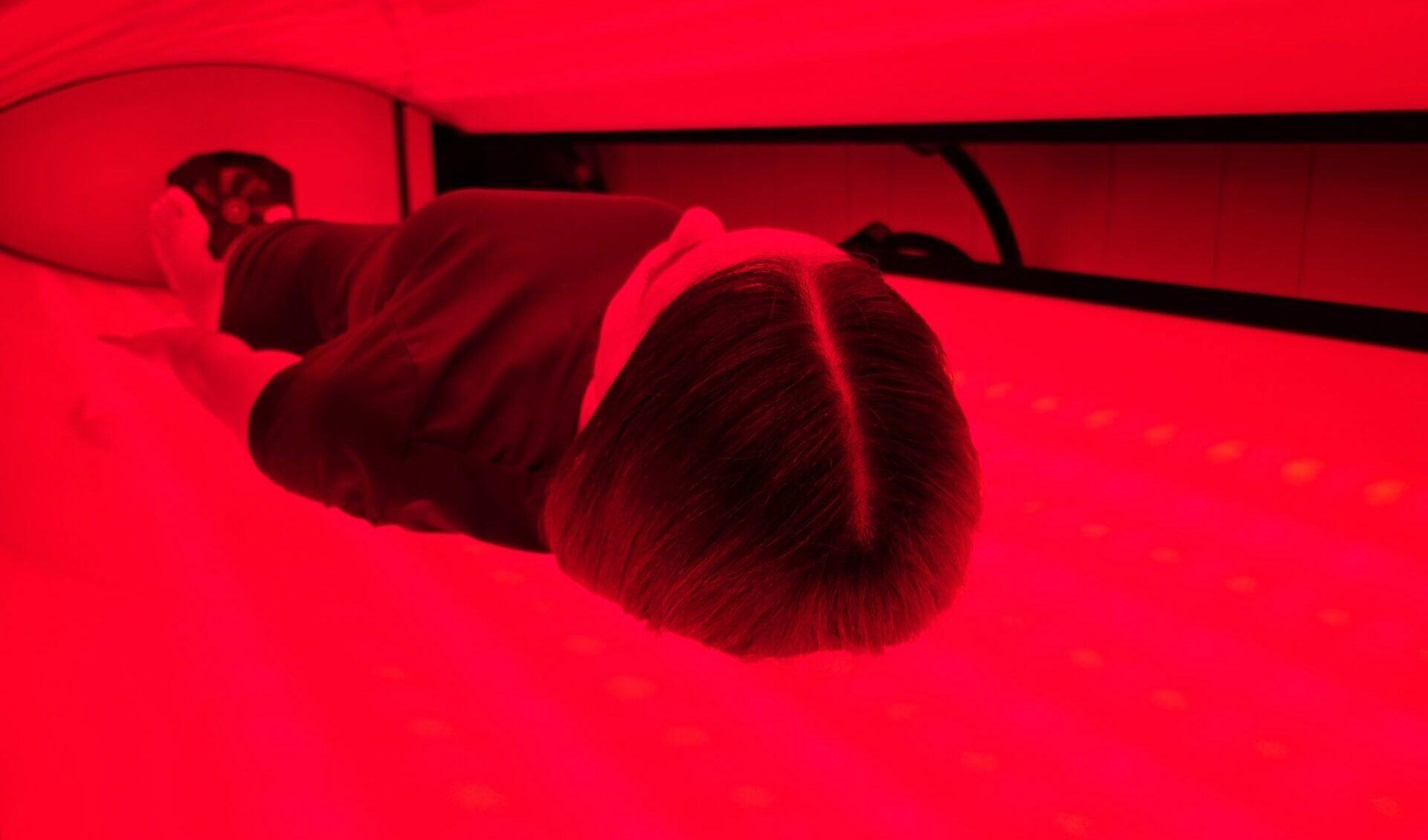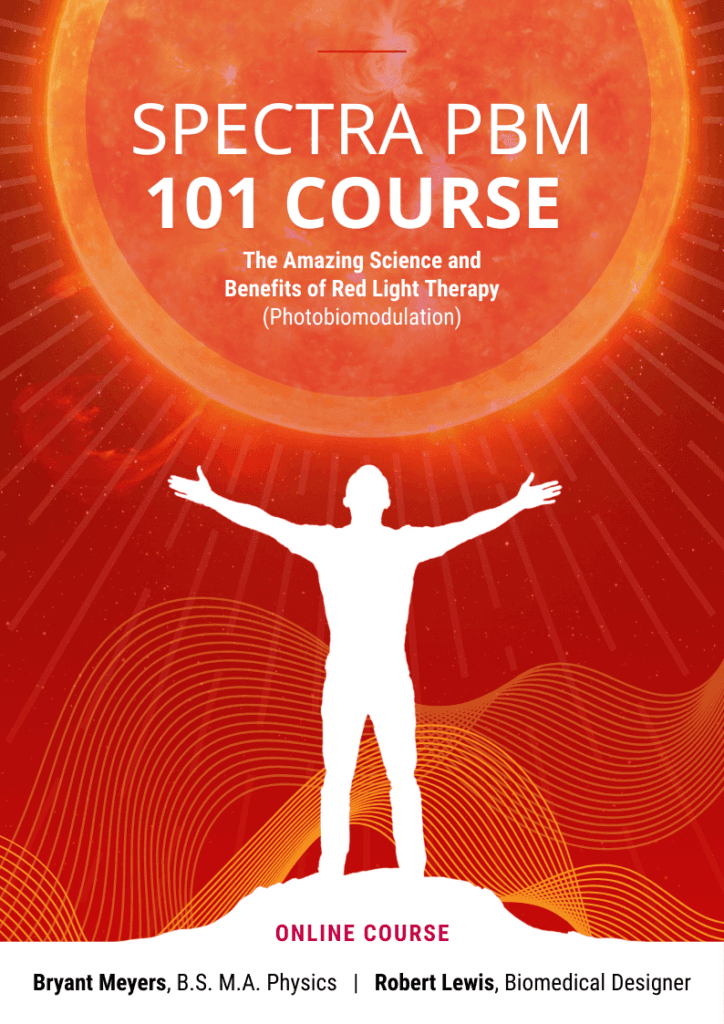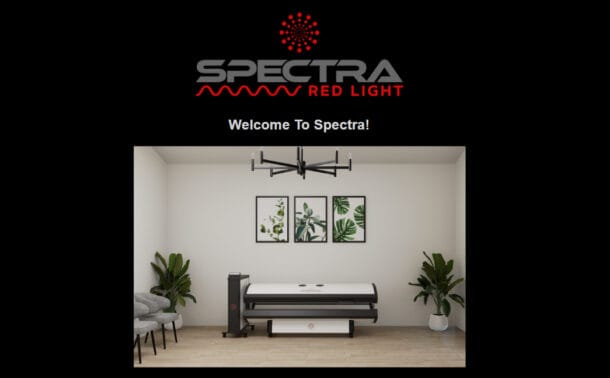An estimated 1.5 million Americans are currently living with Systemic Lupus Erythematosus (SLE), according to the Lupus Foundation of America. This chronic autoimmune condition can affect virtually every organ system, causing symptoms such as persistent fatigue, joint pain, photosensitive rashes, cognitive difficulties, and, in some cases, damage to the kidneys, heart, or nervous system. While pharmaceutical interventions often target immune suppression, many individuals with lupus continue to seek additional options to support cellular resilience, reduce inflammation, and improve quality of life, without introducing new side effects.
One emerging modality gaining attention for its biological plausibility and anti-inflammatory properties is Red Light Therapy (RLT), also known as Photobiomodulation (PBM). This non-invasive therapy uses specific wavelengths of red and near-infrared (NIR) light to interact with the body at a cellular level. The primary photoreceptor targeted by this light is cytochrome c oxidase, an enzyme within the mitochondrial respiratory chain. When stimulated, this interaction leads to increased adenosine triphosphate (ATP) production, improved cellular metabolism, and a cascade of signaling events that include modulation of reactive oxygen species (ROS) and activation of transcription factors involved in inflammation and repair.
For individuals with lupus, these physiological effects may offer compelling support. RLT has been shown to downregulate pro-inflammatory cytokines such as TNF-α, IL-6, and IL-1β, while upregulating protective factors like IL-10. It may also help counteract oxidative stress and mitochondrial dysfunction, both of which are prevalent in autoimmune disease pathophysiology. Additionally, the therapy has demonstrated potential to enhance microcirculation, promote tissue repair, and modulate overactive immune responses, all critical aspects in managing lupus flares and improving systemic resilience.
This article will explore the scientific rationale, cellular mechanisms, and potential applications of Red Light Therapy for those living with lupus, offering an evidence-informed perspective on how light may play a role in systemic wellness and immune balance.
Lupus and the Immune System: A Deeper Look at What’s Happening Inside the Body
To understand how Red Light Therapy may benefit individuals with lupus, it’s important to first understand the disease at its core, on a cellular and immunological level. Systemic Lupus Erythematosus (SLE) is not simply an overactive immune system; it is a multifaceted condition marked by immune dysregulation, chronic inflammation, and oxidative stress that collectively disrupt the body’s ability to maintain cellular homeostasis.
At the center of lupus pathology is a breakdown in immune tolerance, which leads the body to produce autoantibodies, antibodies that mistakenly target its own tissues. These autoantibodies form immune complexes, which can deposit in various tissues and organs, including the skin, joints, kidneys, lungs, and brain. Once deposited, these complexes trigger an inflammatory response through the activation of the complement system, resulting in tissue damage and systemic symptoms.
This immune activation is driven by elevated levels of pro-inflammatory cytokines such as tumor necrosis factor-alpha (TNF-α), interleukin-6 (IL-6), and interferon-gamma (IFN-γ). These molecules act like biochemical messengers that amplify the immune response, recruit more immune cells to the site of damage, and perpetuate inflammation throughout the body. Over time, this cycle contributes to both acute flare-ups and long-term organ damage.
In addition to immune dysregulation, individuals with lupus frequently experience mitochondrial dysfunction, which impairs the ability of cells to generate adequate adenosine triphosphate (ATP), the molecule responsible for cellular energy. This energy deficit contributes to the hallmark fatigue of lupus and reduces the capacity for tissue repair and regeneration. Simultaneously, lupus is characterized by excessive production of reactive oxygen species (ROS), which further damages cells and promotes inflammation, a state commonly referred to as oxidative stress.
This is where Red Light Therapy offers a biologically plausible and scientifically supported adjunctive approach. By delivering targeted wavelengths of red and near-infrared light to the cells, RLT activates cytochrome c oxidase, a key enzyme in the mitochondrial electron transport chain. This activation enhances mitochondrial function, leading to increased ATP production and more efficient cellular energy metabolism. With better mitochondrial performance, cells are better equipped to combat inflammation, neutralize oxidative stress, and support tissue repair.
RLT has demonstrated the ability to modulate immune activity by reducing the expression of inflammatory cytokines (such as IL-1β and TNF-α) and enhancing the release of anti-inflammatory cytokines like interleukin-10 (IL-10). This immunomodulatory effect may help restore balance in an overactive immune system without broadly suppressing it, making RLT a unique wellness strategy in autoimmune support.
By targeting key biological dysfunctions seen in lupus, immune dysregulation, mitochondrial impairment, and oxidative stress, Red Light Therapy offers a mechanism-based approach to enhancing resilience at the cellular level. While it is not a cure or replacement for medical care, it may serve as a valuable tool in a broader wellness plan for those managing lupus and its complex systemic effects.
Red Light Therapy: How Light Energizes and Balances the Body at a Cellular Level
Red Light Therapy (RLT), also known as Photobiomodulation (PBM), is a non-invasive, evidence-based wellness modality that uses specific wavelengths of visible red and near-infrared (NIR) light to stimulate biological processes deep within the body. Unlike ultraviolet (UV) light, which can damage DNA, red and NIR light interact with cells in a restorative way, promoting balance, energy production, and reduced inflammation.
The key to Red Light Therapy’s effectiveness lies in its interaction with mitochondria, the energy-producing organelles found in nearly every cell of the body. Within the mitochondria, red and NIR light is absorbed by a light-sensitive enzyme called cytochrome c oxidase, a critical component of the electron transport chain. When this enzyme absorbs photons of light, it becomes more efficient at driving the production of adenosine triphosphate (ATP), the fundamental molecule required for energy-dependent cellular processes.
For individuals living with lupus, where chronic inflammation, oxidative stress, and mitochondrial dysfunction are common, this increase in ATP production can be profoundly supportive. By restoring cellular energy balance, Red Light Therapy enhances the body’s ability to repair damaged tissues, regulate immune responses, and combat inflammatory processes more effectively.
In addition to stimulating mitochondrial activity, Red Light Therapy modulates the production of reactive oxygen species (ROS), molecules that, in excess, contribute to oxidative damage and cell death. RLT helps to maintain ROS at a healthy physiological level, acting as a redox regulator that supports antioxidant defense systems and reduces cellular stress. This is especially relevant for lupus, a condition known for elevated oxidative burden and impaired detoxification mechanisms.
Red Light Therapy also influences cell signaling pathways through the activation of transcription factors such as NF-κB, which is associated with inflammatory gene expression, and Nrf2, which regulates antioxidant defenses. By balancing these pathways, RLT contributes to reduced inflammation, immune modulation, and improved tissue homeostasis.
Importantly, RLT can be applied locally, such as on joints, muscles, or skin lesions, and systemically through full-body panels. In both cases, the goal is the same: to promote internal cellular health by harnessing the body’s natural response to specific wavelengths of light. For those managing this condition, this means potential support in reducing flare frequency, easing physical discomfort, enhancing energy levels, and improving overall resilience without introducing additional chemical or pharmacological load.
Red Light Therapy works at the intersection of light and biology, reawakening the cell’s natural power to heal, regulate, and thrive. It represents a safe, science-backed approach that may offer meaningful benefits to individuals seeking more balance and support in the face of complex autoimmune challenges like lupus.

How RLT Supports Immune Balance and Cellular Health in Lupus
Red Light Therapy offers a unique and science-supported approach to wellness by targeting the underlying cellular disruptions that contribute to the symptoms and systemic inflammation seen in lupus. Through its action on mitochondrial function, immune signaling, and oxidative stress pathways, Red Light Therapy may help restore physiological balance in key areas that are dysregulated in autoimmune conditions. Below are the primary mechanisms by which Red Light Therapy may support individuals managing lupus:
Immunomodulation: Rebalancing the Immune Response
Lupus is marked by an overactive immune system that mistakenly attacks the body’s own tissues. One of the most promising benefits of Red Light Therapy is its ability to modulate immune function, not by suppressing it, but by helping restore proper immune signaling.
Photobiomodulation has been shown to downregulate pro-inflammatory cytokines such as TNF-α, IL-1β, and IL-6, which are commonly elevated in lupus. These cytokines are responsible for promoting inflammation and triggering flare-ups. Simultaneously, RLT can increase levels of anti-inflammatory cytokines such as interleukin-10 (IL-10), helping to shift the immune response toward a more regulated and less reactive state.
This immunomodulatory effect may reduce the severity of inflammatory episodes and contribute to more stable, symptom-free periods, offering a valuable adjunct to medical care for those seeking greater immune balance.
Mitochondrial Activation and Increased ATP Production
Chronic fatigue is one of the most debilitating symptoms experienced by people with lupus. This fatigue is often linked to mitochondrial dysfunction, where cells are unable to efficiently produce energy.
Red Light Therapy targets this dysfunction at the root by stimulating cytochrome c oxidase in the mitochondrial electron transport chain. This stimulation enhances the production of adenosine triphosphate (ATP), the molecule required for all energy-dependent cellular activities. Increased ATP levels support not only physical energy and endurance, but also fuel critical repair and recovery processes in tissues affected by lupus-related inflammation.
By improving mitochondrial function, Red Light Therapy may help reduce fatigue, improve muscle function, and enhance overall vitality in individuals with this condition.
Reduction of Oxidative Stress and Support for Antioxidant Defenses
Lupus is characterized by elevated levels of reactive oxygen species (ROS) and impaired antioxidant capacity, leading to oxidative damage to lipids, proteins, and DNA. This damage contributes to tissue injury, inflammation, and accelerated aging at the cellular level.
Red Light Therapy acts as a redox signaling modulator, promoting the production of ROS in low, physiologically beneficial amounts while simultaneously upregulating endogenous antioxidant systems. This includes activation of the Nrf2 pathway, which governs the expression of key antioxidant enzymes like superoxide dismutase (SOD) and glutathione peroxidase.
This dual effect, reducing harmful oxidative stress while strengthening the body’s natural defenses, creates a more stable and protected cellular environment, potentially reducing lupus-related tissue damage.
Alleviation of Inflammation and Pain in Muscles and Joints
Many individuals with lupus experience arthralgia, myalgia, and joint stiffness as part of their daily symptoms. Red Light Therapy has well-documented effects on pain modulation and inflammation relief, particularly in musculoskeletal tissues.
By increasing local blood flow, reducing the expression of pro-inflammatory prostaglandins, and modulating nerve excitability, RLT can help reduce discomfort in inflamed joints and muscles. It also supports the resolution phase of inflammation by enhancing lymphatic drainage and tissue repair at the site of application.
This localized benefit is particularly helpful for individuals experiencing lupus flares that manifest in the musculoskeletal system.
Improvement of Microcirculation and Tissue Oxygenation
Vascular complications and impaired microcirculation are common in this condition, particularly in cases involving the skin or kidneys. Red Light Therapy has been shown to stimulate nitric oxide (NO) release, which plays a key role in vasodilation and enhanced blood flow.
By improving microvascular function, RLT increases oxygen and nutrient delivery to tissues, promotes cellular detoxification, and supports healing in areas affected by inflammation or poor circulation. This may benefit individuals with cutaneous lupus, Raynaud’s phenomenon, or kidney involvement, where efficient blood flow is essential for minimizing damage and preserving function.
Red Light Therapy’s multifaceted effects on mitochondrial efficiency, immune regulation, oxidative balance, and microvascular circulation make it a compelling option for individuals with lupus who are looking to support their body’s internal systems holistically. While not a cure or a replacement for medical therapies, it offers a promising avenue to reduce symptom severity, increase resilience, and improve day-to-day quality of life.

Scientific Evidence Supporting RLT in Autoimmune and Inflammatory Conditions
The therapeutic use of red and near-infrared light, collectively referred to as Photobiomodulation (PBM) or Low-Level Light Therapy (LLLT), has been increasingly studied for its ability to modulate immune responses, reduce inflammation, and promote tissue repair. While research specifically on lupus (Systemic Lupus Erythematosus, or SLE) remains limited, existing studies on lupus-related symptoms and other autoimmune or inflammatory conditions provide a growing foundation of scientific support for Red Light Therapy’s clinical potential.
Targeted Pain Relief and Functional Improvement in Lupus
One notable study titled Effect of low-level gallium aluminum arsenide laser therapy on the chewing performance and pain perception of patients with systemic lupus erythematosus: A randomized controlled clinical trial evaluated the effects of LLLT on SLE patients experiencing myogenic temporomandibular dysfunction (TMD), a musculoskeletal complication that often involves chronic facial pain and impaired jaw mobility. In this randomized controlled clinical trial, researchers applied low-level gallium-aluminum-arsenide laser therapy and measured outcomes in pain and chewing performance.
“LLLT was an effective therapeutic approach in reducing pain and improving CP [chewing performance] for one month in SLE patients with myogenic TMD.” [2]
These results highlight the ability of Red Light Therapy to reduce localized inflammation and improve neuromuscular function in lupus-related conditions, suggesting broader potential for addressing other forms of musculoskeletal pain common in SLE.
Immunomodulation and Regenerative Support in Autoimmune Dermatologic Conditions
While lupus presents systemically, many of its symptoms, particularly cutaneous manifestations, overlap with other autoimmune or inflammatory skin conditions. Studies investigating Red Light Therapy for alopecia, another autoimmune condition, demonstrate immune-modulating and regenerative effects relevant to lupus care.
In a systematic review published with the name of Efficacy and Safety of Laser Therapy and Phototherapy in Cicatricial and NonCicatricial Alopecia: A Systematic Review Study, researchers analyzed the effectiveness of light-based therapies in cicatricial (scarring) and non-cicatricial (non-scarring) alopecia, including Alopecia Areata (AA), an autoimmune condition, and Androgenetic Alopecia (AGA).
“Light/laser therapy can be useful in recalcitrant and severe types of AA with an average efficacy of about 50% and with highest efficacy of 75%. Also, in female and male pattern AGA, light therapy especially LLLT has an efficacy of about 50% as an alternative therapy.” [3]
The relevance of lupus lies in the shared inflammatory and autoimmune components. Red Light Therapy’s ability to reduce immune-mediated tissue damage and promote hair follicle regeneration, angiogenesis, and epidermal repair suggests that it may have similar regenerative and anti-inflammatory benefits for cutaneous lupus erythematosus and related skin involvement.
Additional Benefits of Red Light Therapy for Lupus Patients
Beyond its well-documented roles in immune regulation, mitochondrial activation, and inflammation control, Red Light Therapy (RLT) may offer a range of additional benefits for individuals managing lupus, many of which are tied to systemic physiological improvements. These secondary effects further support the body’s resilience and recovery capacity, especially in the face of chronic autoimmune challenges.
Enhanced Sleep Quality and Circadian Regulation
Sleep disturbances are common in lupus, often exacerbated by inflammation, pain, and hormonal imbalances. Red Light Therapy has demonstrated potential to support healthy circadian rhythms by influencing the secretion of melatonin, a hormone regulated by light exposure and essential for restorative sleep.
While blue light exposure suppresses melatonin production, red and near-infrared wavelengths appear to preserve and even enhance melatonin synthesis, particularly when used in the evening. This occurs through non-visual photoreceptors and neuroendocrine modulation involving the suprachiasmatic nucleus (SCN), the brain’s circadian control center.
By improving sleep duration and quality, RLT may indirectly reduce flare severity, support immune recovery, and enhance overall well-being in lupus patients.
Support for Mood and Cognitive Function
Neuropsychiatric symptoms such as depression, anxiety, and brain fog are frequently reported in lupus. These are believed to stem from neuroinflammation, hypoperfusion, and oxidative damage in the central nervous system.
Red Light Therapy, particularly in the near-infrared range, can penetrate the skull and cerebral tissue, where it has been shown to:
- Increase cerebral blood flow
- Enhance oxygen metabolism in the prefrontal cortex
- Reduce neuroinflammatory cytokines
- Support neurogenesis and synaptic plasticity
These effects may contribute to better focus, mood regulation, and cognitive clarity, offering meaningful support to lupus patients dealing with mental fatigue or neurocognitive dysfunction.
Skin Health and Repair in Cutaneous Lupus
In cases of cutaneous lupus erythematosus (CLE), skin inflammation and photosensitivity are persistent issues. While sun exposure can exacerbate lesions, Red Light Therapy operates at non-damaging wavelengths that do not trigger ultraviolet-induced flares.
RLT promotes keratinocyte proliferation, collagen synthesis, and angiogenesis, all of which are essential for skin regeneration. It also exerts anti-inflammatory effects on dermal immune cells such as mast cells and Langerhans cells, helping to reduce localized swelling and erythema.
Used carefully and with proper medical guidance, Red Light Therapy may aid in improving skin tone, texture, and barrier integrity, particularly for individuals with chronic or scarring lesions.
Improved Physical Recovery and Exercise Tolerance
People with lupus often struggle with muscle soreness and post-exertional fatigue. Red Light Therapy has been shown to reduce exercise-induced oxidative damage, support mitochondrial biogenesis, and shorten recovery time following physical activity.
By enhancing muscle oxygenation and reducing inflammatory markers such as creatine kinase, RLT may help lupus patients engage in gentle exercise with less discomfort, supporting musculoskeletal health and cardiovascular endurance over time.
Red Light Therapy provides a wide spectrum of physiological support that goes far beyond its anti-inflammatory core. From enhancing sleep and mood to improving skin quality and physical performance, RLT may help individuals with lupus regain control over many aspects of daily life, offering a sense of empowerment and improved quality of living through science-backed, cellular-level support.

Lupus is a complex autoimmune condition that affects the body on multiple levels, from immune dysregulation and chronic inflammation to mitochondrial dysfunction and oxidative stress. For individuals navigating this multifaceted disease, Red Light Therapy offers a compelling, non-invasive approach to systemic support rooted in well-established biological mechanisms.
By stimulating cytochrome c oxidase within the mitochondrial respiratory chain, Red Light Therapy enhances ATP production, supporting cellular energy metabolism in tissues compromised by chronic inflammation. It also exerts a regulatory effect on immune signaling, reducing pro-inflammatory cytokines such as TNF-α, IL-1β, and IL-6, while promoting anti-inflammatory mediators like IL-10. Through the modulation of oxidative stress via activation of the Nrf2 antioxidant pathway, Red Light Therapy helps restore redox balance and prevent further tissue damage, a critical factor in autoimmune disease progression.
Additional benefits such as improved sleep quality, enhanced microcirculation, reduced muscle and joint discomfort, and better skin health further position Red Light Therapy as a valuable wellness modality for individuals with lupus. While it is not a cure, and should never replace medical guidance, Red Light Therapy can complement conventional care strategies by supporting the body’s intrinsic capacity for healing, regulation, and repair at the cellular level.
As research continues to expand, early evidence already supports the integration of Photobiomodulation into broader wellness protocols for autoimmune and inflammatory conditions. For those living with lupus, Red Light Therapy may illuminate a new path toward resilience, symptom relief, and improved quality of life, one wavelength at a time.
References
[1] Lupus Facts and Statistics | Lupus Foundation of America. (n.d.). Lupus Foundation of America. https://www.lupus.org/resources/lupus-facts-and-statistics
[2] Benli M, Huck O, Özcan M. Effect of low-level gallium aluminum arsenide laser therapy on the chewing performance and pain perception of patients with systemic lupus erythematosus: A randomized controlled clinical trial. Cranio. 2024 Jul;42(4):411-420. doi: 10.1080/08869634.2021.1971888. Epub 2021 Aug 29. PMID: 34455912.
[3] Jafari MA, Bazgir G, Hosseini-Baharanchi FS, Jafarzadeh A, Goodarzi A. Efficacy and Safety of Laser Therapy and Phototherapy in Cicatricial and Non Cicatricial Alopecia: A Systematic Review Study. Health Sci Rep. 2024 Nov 4;7(11):e70180. doi: 10.1002/hsr2.70180. PMID: 39502132; PMCID: PMC11534645.


